April 3rd 2023
The Azores, Portugal
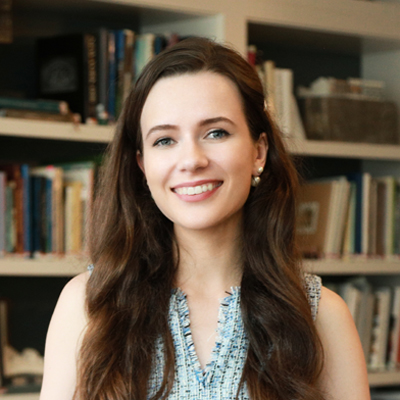
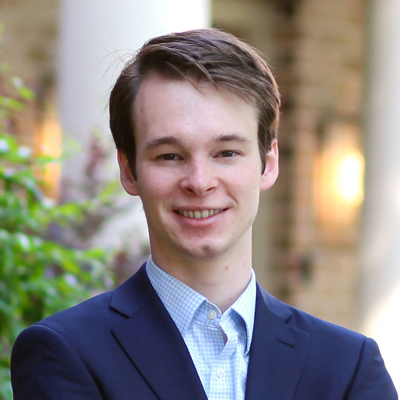 Travelers: Madeline and Andrew Seago
Travelers: Madeline and Andrew Seago
Destination: Azores, Portugal
In July of 2022, Madeline and Andrew Seago spent two weeks exploring the Azores as part of an annual Summer School organized by INTBAU and the Premio Rafael Manzano. They were grateful for the opportunity to participate as alumni, and re-immerse themselves in academic pursuits, intensely sketching, participating in lectures, and designing. The exceptional list of professors and lecturers for the program included Alejandro García Hermida, Frank Martinez, José Baganha, Jorge Santos Silva, and Lucien Steil.
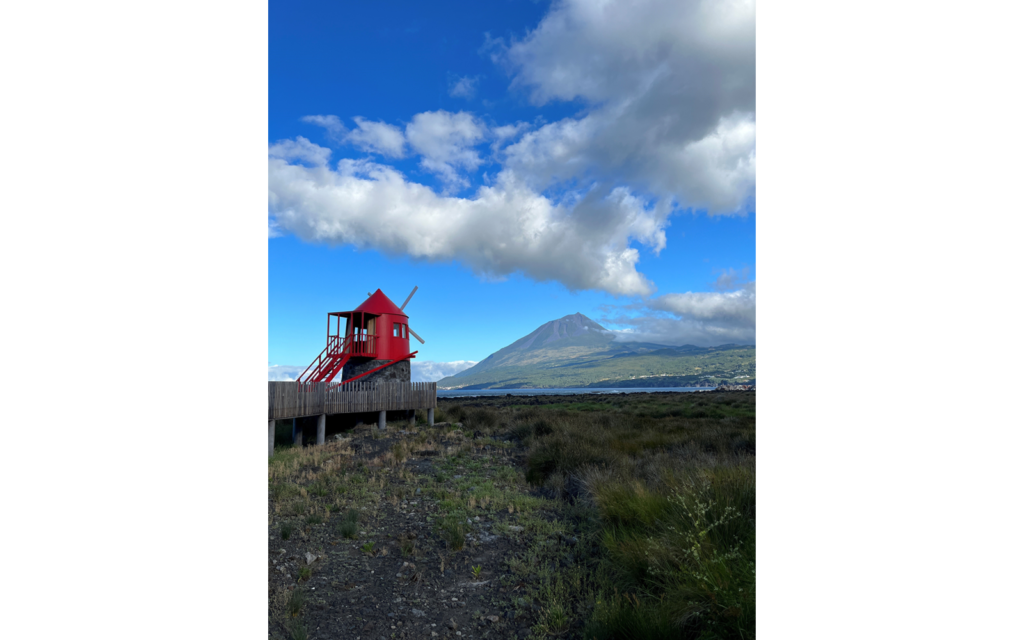
A newly reconstructed windmill sits picturesquely on the coast in Lajes, with Mount Pico – the highest point in Portugal – in the background.
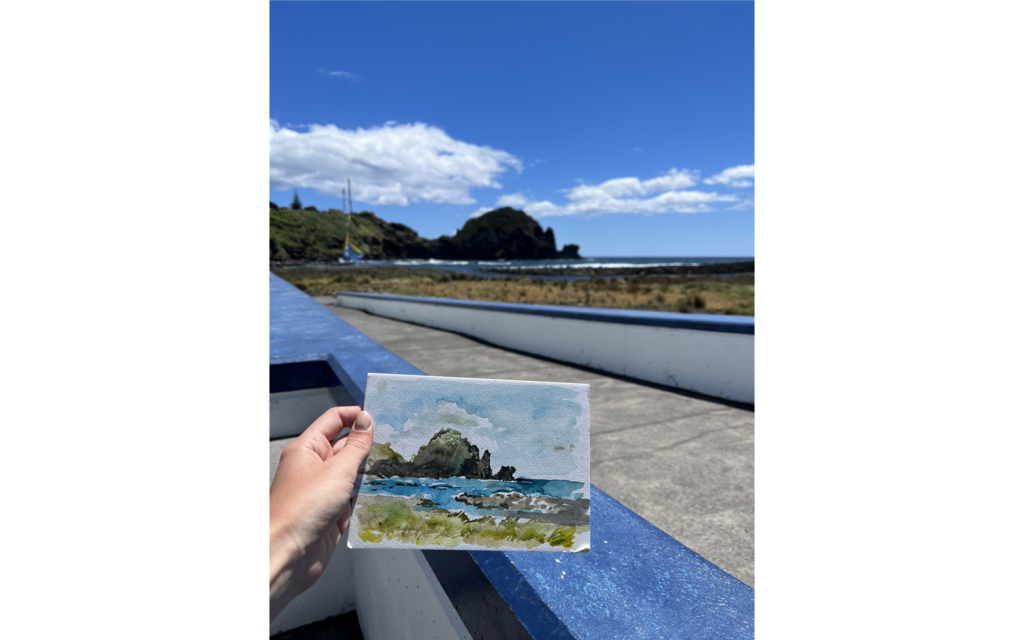
Madeline's plein air painting of Castelete, the inner remnants of an ancient volcano.
We spent most of the two weeks on Pico Island, the second largest and most recently formed in the volcanic archipelago. The harsh landscape, with constant winds, rugged lava rock formations, and little fresh water, has resulted in unique building typologies and construction practices.
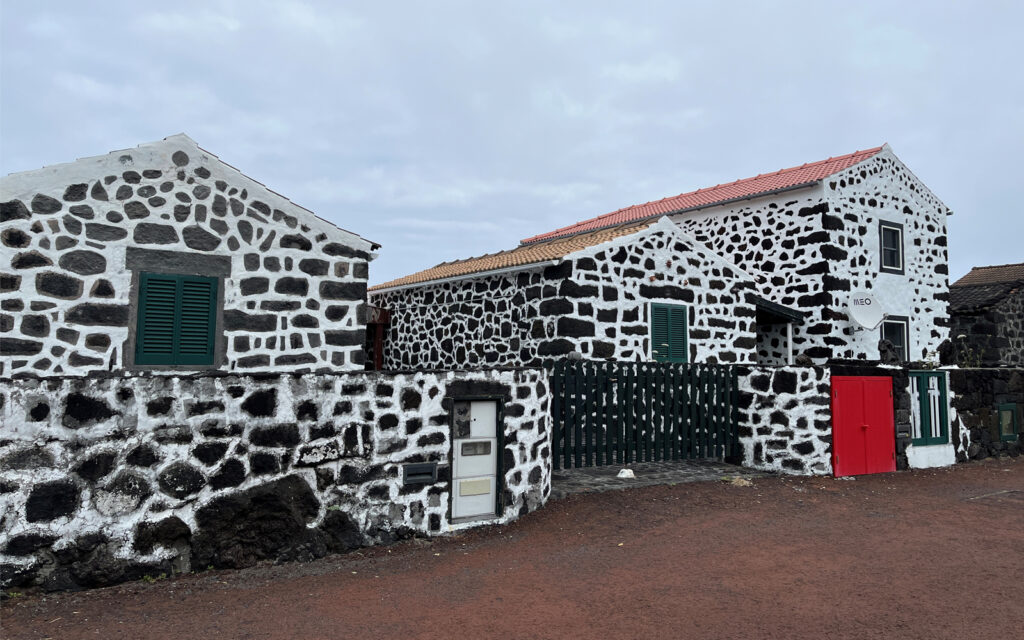
A street in the village of Lajido.
The only building material local to the island is the plentiful igneous rock. Roof tiles and plaster are imported from the Iberian Peninsula. High humidity and chilly winter winds meant that early residents, who trickled in starting in the late 1400s, built compact houses out of stone blocks, filling chinks with plaster as funds allowed. Houses often were built above stables, to conserve heat from livestock.
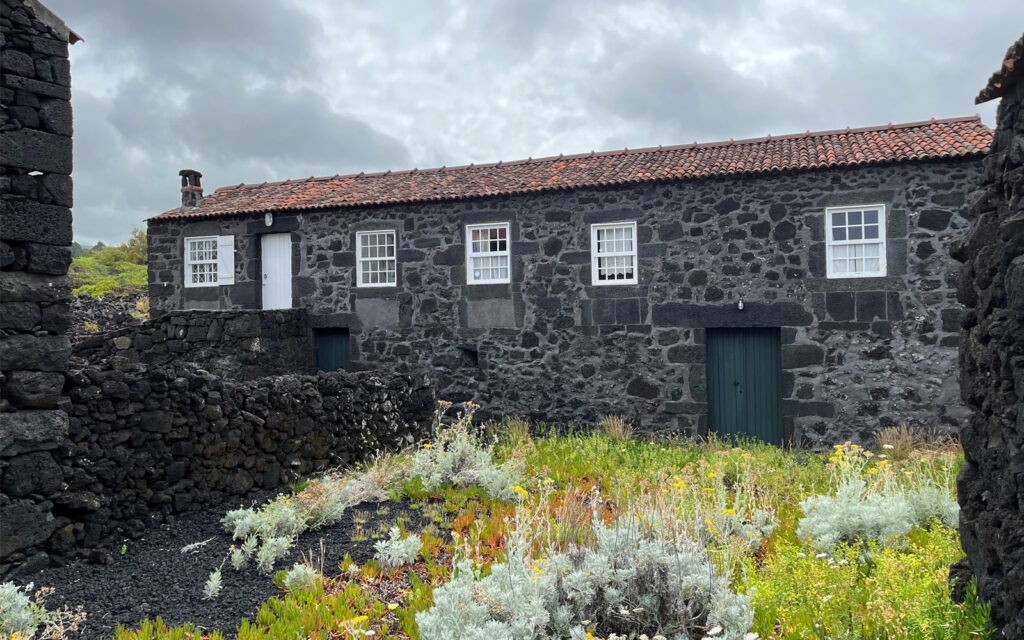
A typical house above a stable in Lajido, Pico.
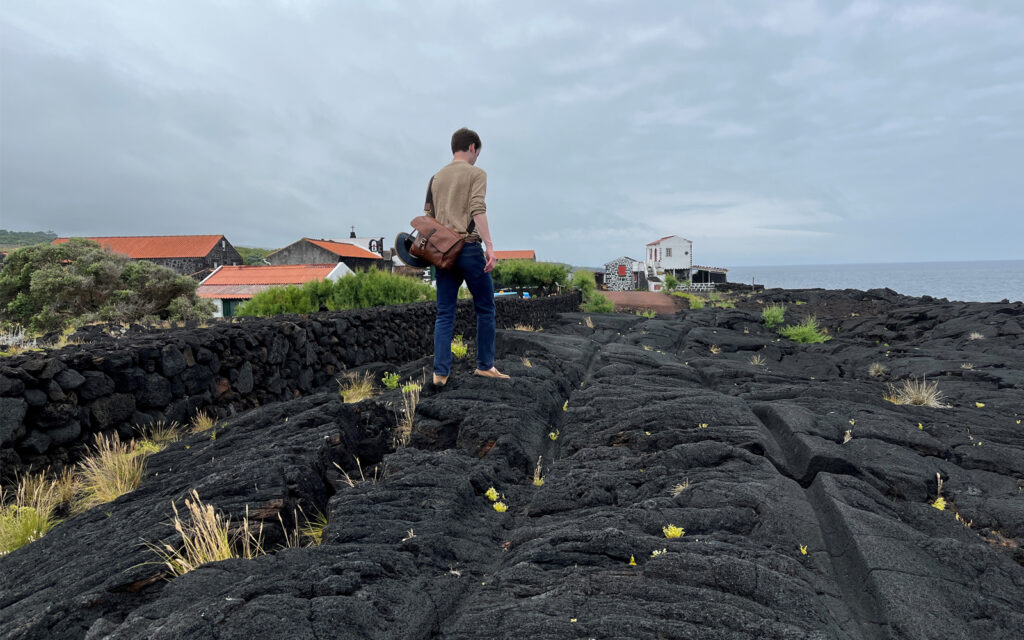
Centuries of fishermen carting their catch over the lava rock carved deep grooves in the extremely tough stone.
Homes and villages line the coast of Pico, as the highland ridge is cold and humid in the winter. Most of the fresh water on the island is collected in the highlands, however, so hardy cows drink from pools that dot the landscape.
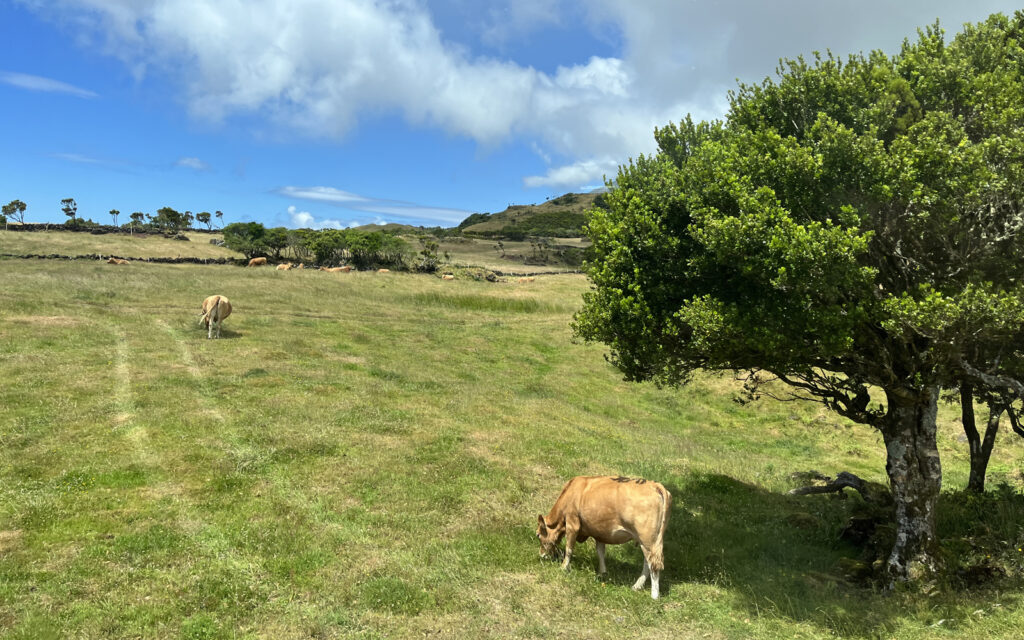
Hardy cows enjoy the summer sun.
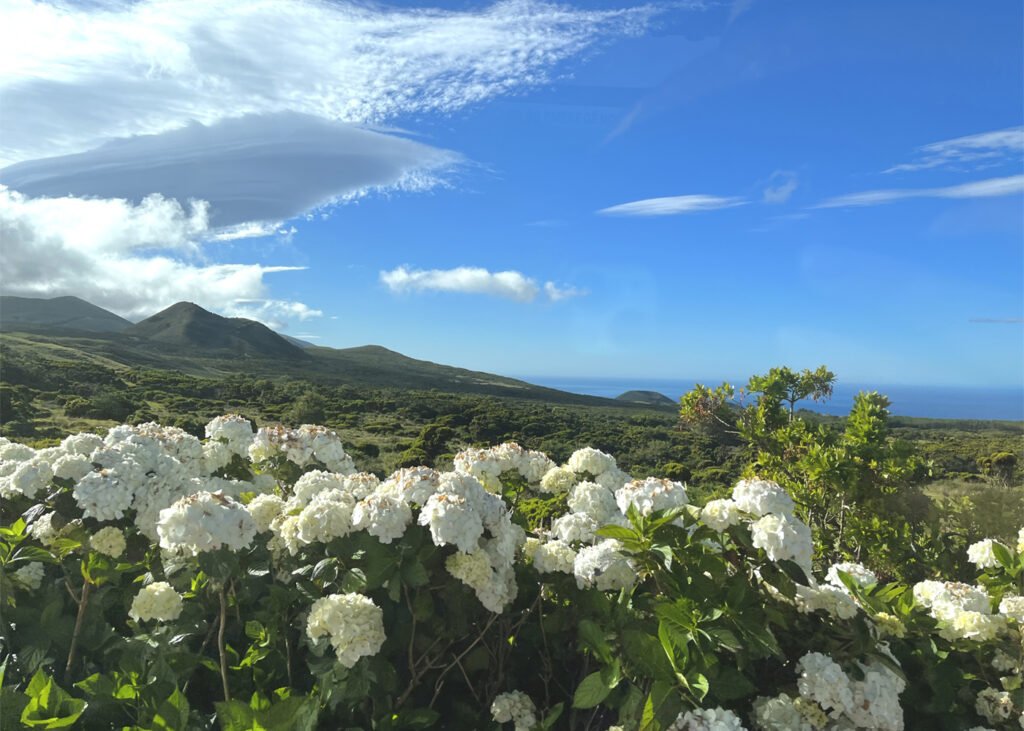
Hydrangeas bloom wild throughout the island and are a source of local pride.
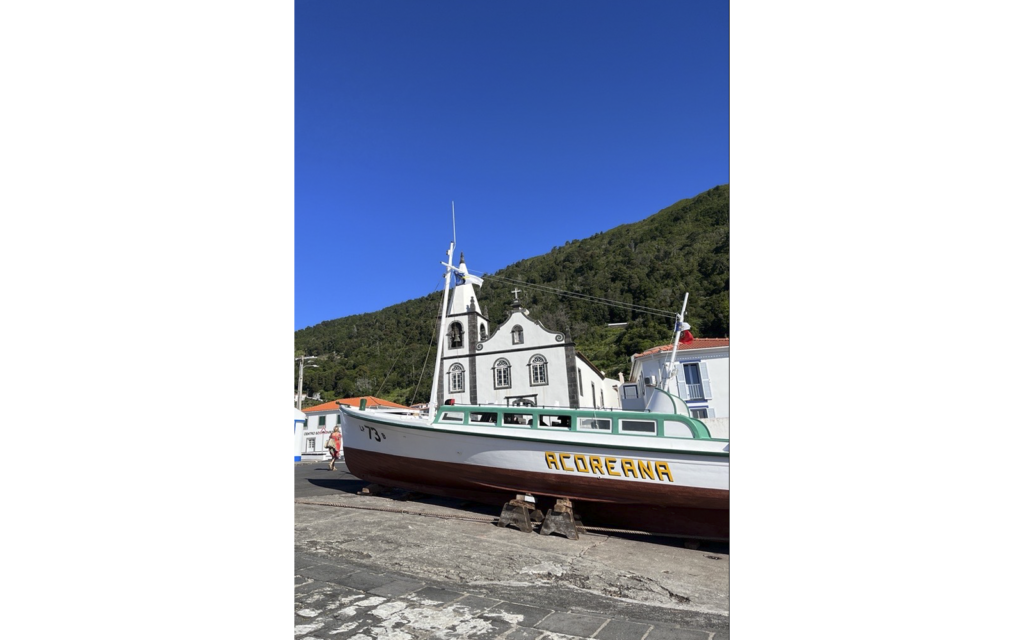
The seaside village of Ribeiras.
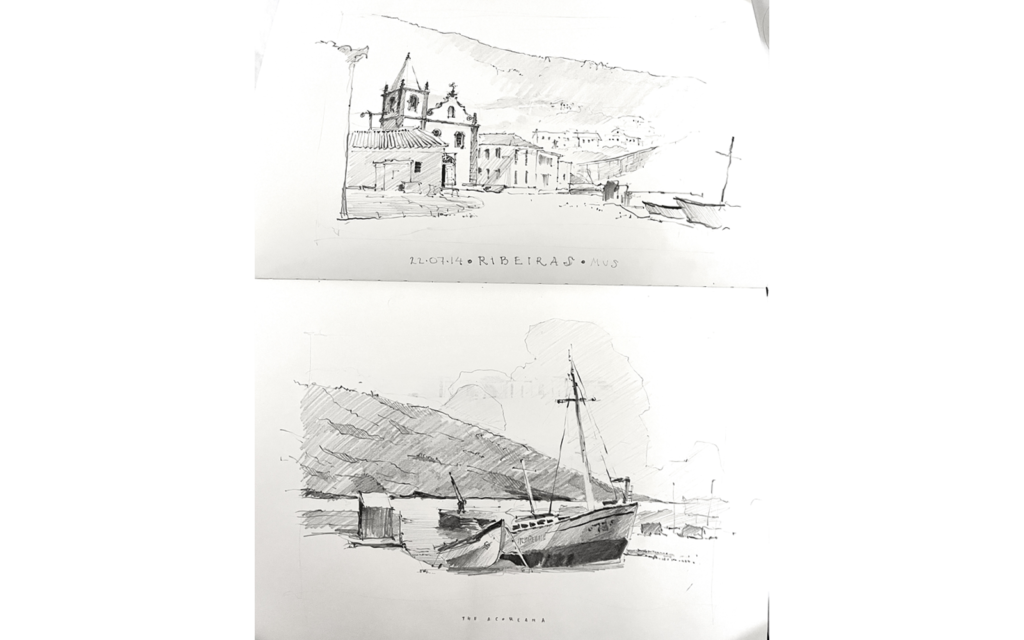
Madeline’s sketches on site at Ribeiras.
The first week of the program, all the students took day trips to different towns and villages of Pico, drawing, measuring, and studying the place from the urban scale down to details.
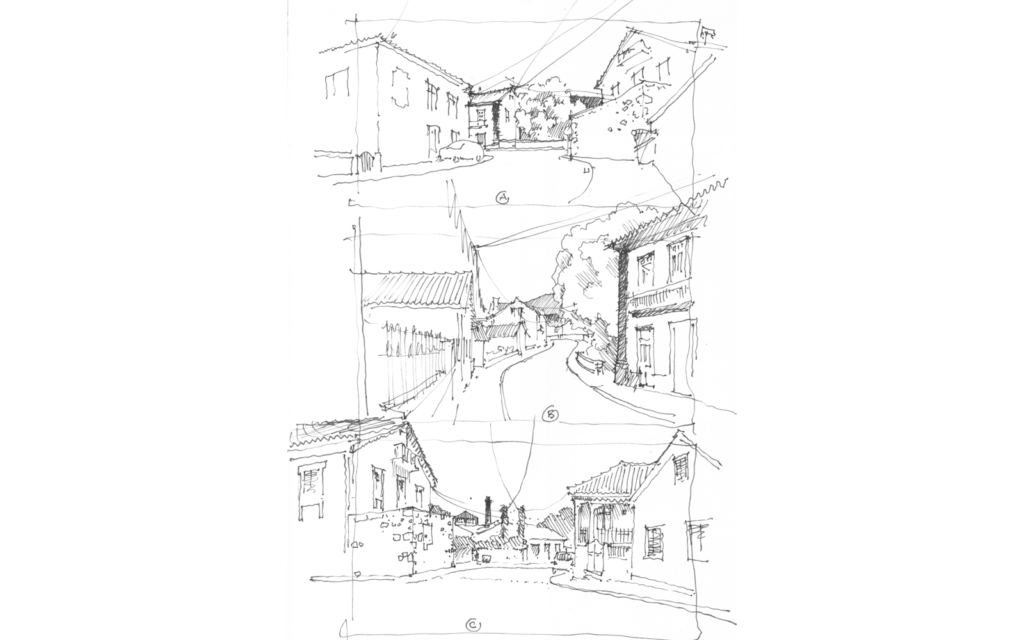
Andrew’s sketches of streets, on site at São Roque do Pico.
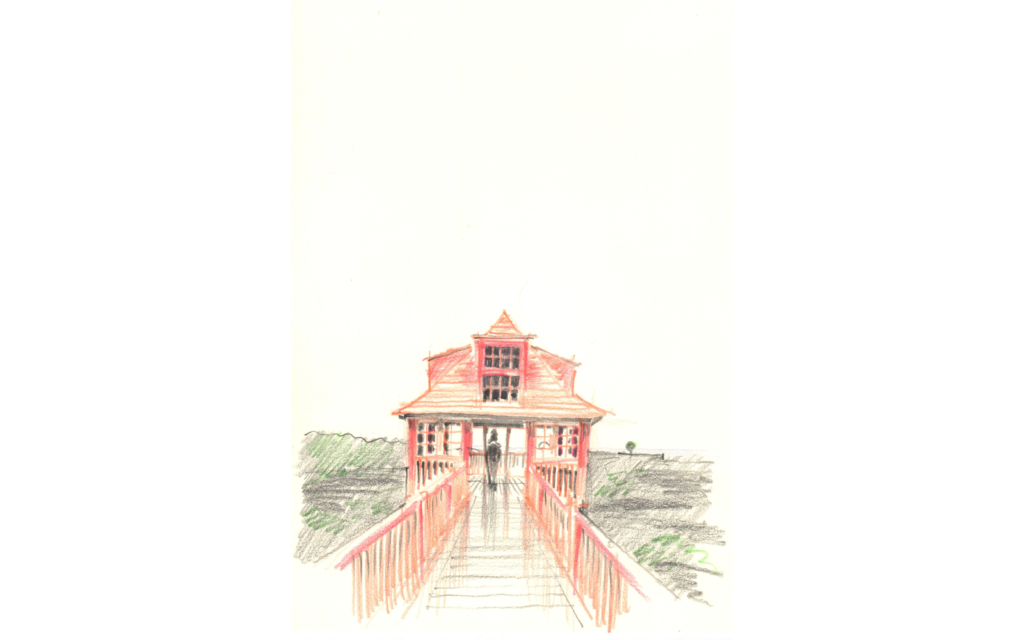
Andrew’s sketch, from the Museu do Vinho, Madalena.
The second week, the students produced a new urban plan for Lajes do Pico, filling vacant lots and dreaming about what to do on the sites of some crumbling buildings built after 1950.
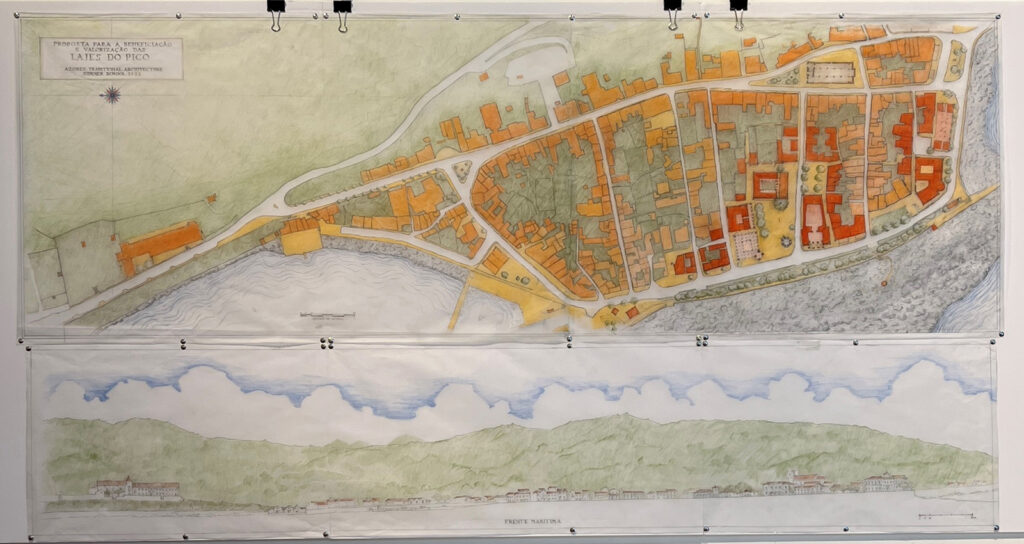
The final presentation drawings designed and made by the group of students, with a site elevation.
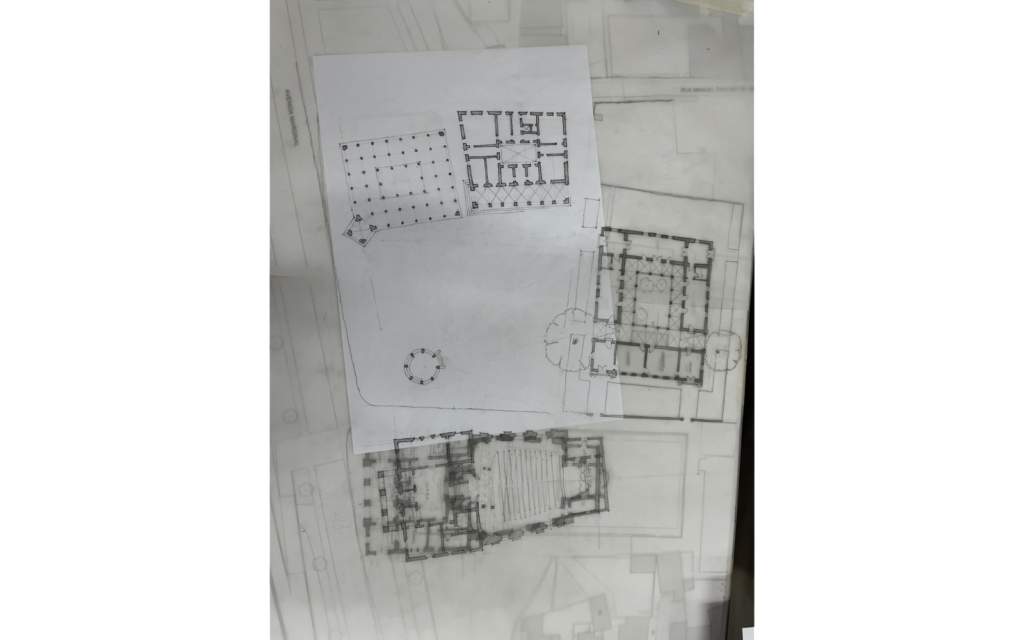
Process sketches for a new urban square.
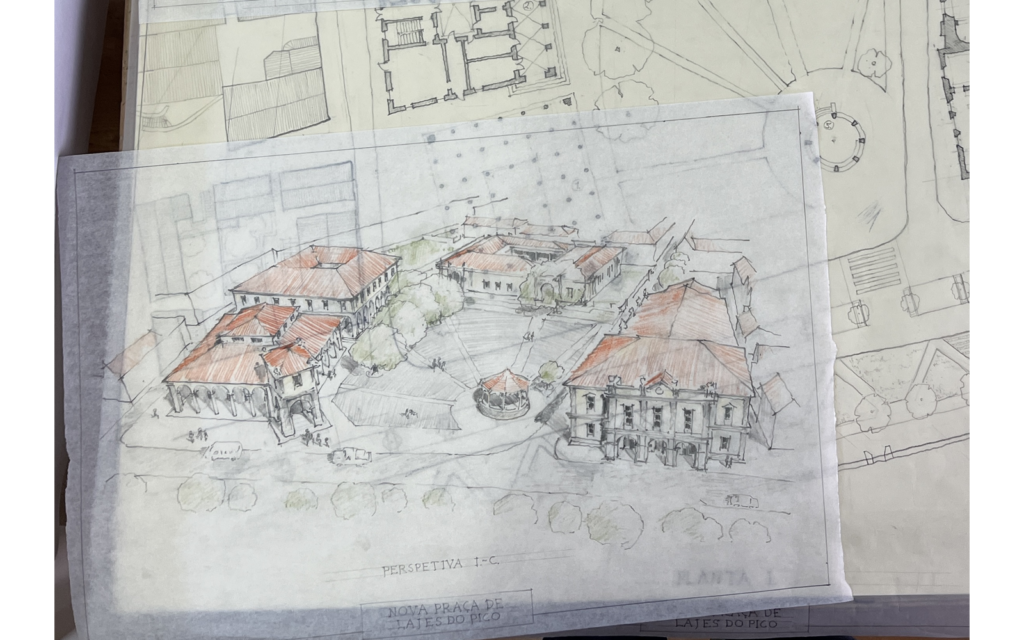
Andrew’s sketch of a new urban square.
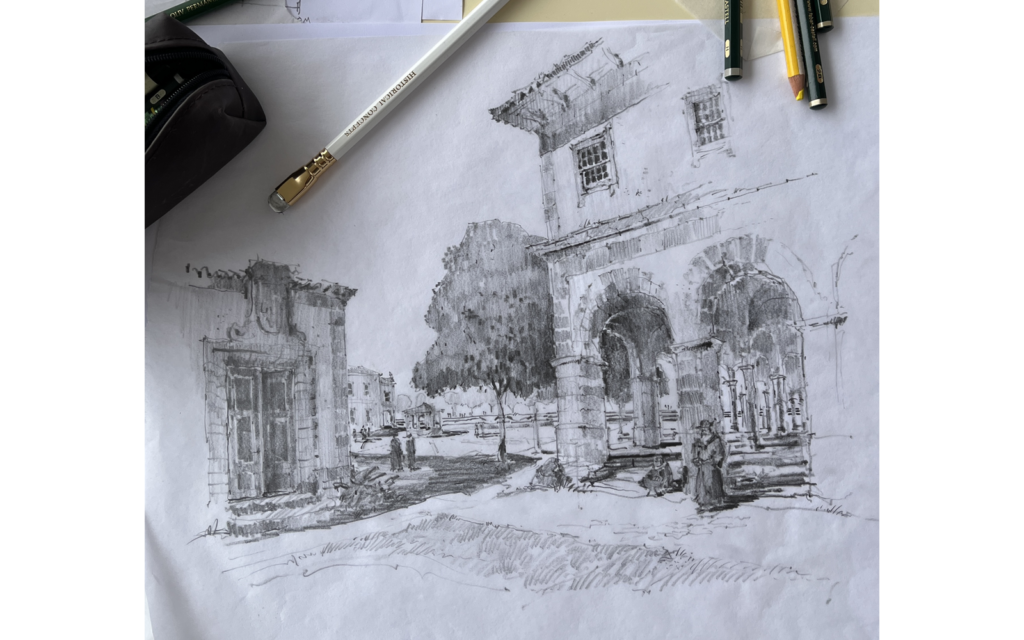
Madeline’s perspective looking into the same square.
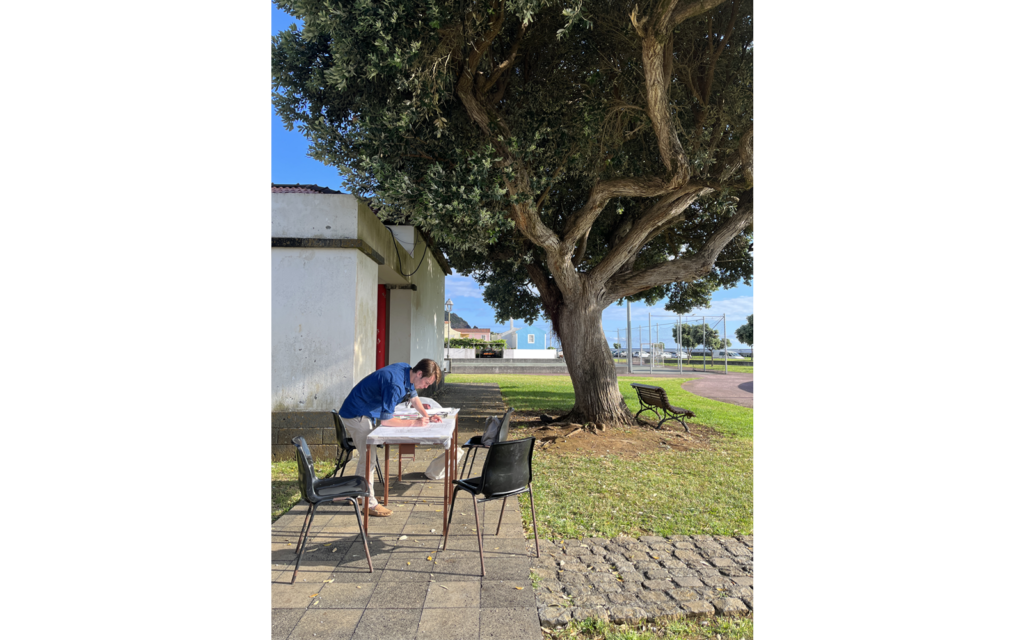
Andrew working on the final presentation drawings.
We both loved participating in this summer school. We are both so grateful for the opportunity to learn from experts about the formation, culture, and architectural heritage of Pico Island – and we learned as much from our incredible student peers. Thanks for coming on this short trip to the Azores with us!
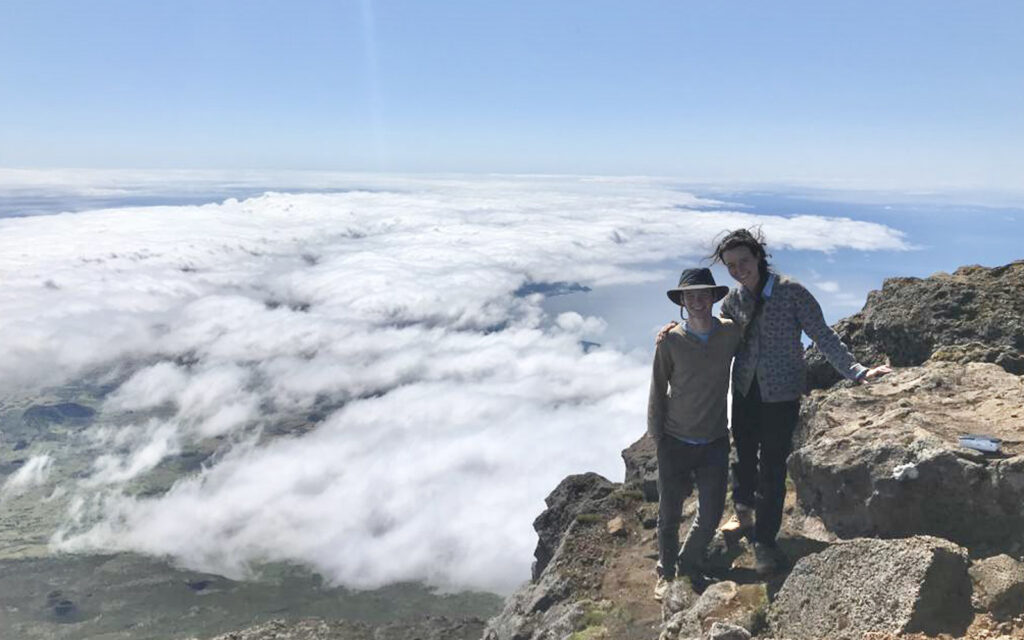
We hiked to the top of Pico Mountain, the highest point in Portugal. Castelete, a rock formation near the town of Lajes do Pico, is visible in the background.


Follow along our morning sketch exercises on Instagram, which also features Madeline and Andrew’s trip, here: https://www.instagram.com/historicalconcepts_sketches/